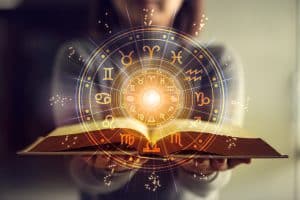As Autumn settles in rainy Seattle, it unveils a darker, more mysterious side of the city. Beneath the charm of pumpkin-spiced lattes and fog-draped mornings lies a rich tapestry of haunted lore—none more captivating than the spectral stories surrounding Pike Place Market. This historic hub, known for its fish tosses and artisan stalls, also harbors tales of restless spirits, hidden passageways, and ghostly encounters that have lingered for over a century.
For travelers drawn to haunted city locations, Seattle in autumn offers an immersive adventure into the supernatural. Pike Place Market becomes more than a tourist stop—it transforms into a living archive of ghost stories, tragic histories, and unexplained phenomena. This article dives deep into the haunted legacy of the market, what to explore while waiting for a ghost tour, and how to make the most of a spine-tingling seasonal visit.
The Haunted History of Pike Place Market
Established in 1907, Pike Place Market is one of the oldest continuously operated public markets in the United States. But beneath its bustling surface lies a layered past marked by hardship, death, and transformation. The market was built atop the ruins of Seattle’s original downtown, which was devastated by the Great Fire of 1889. Many of the buildings were reconstructed over older foundations, some of which still exist in the market’s lower levels.
Over the decades, Pike Place has been home to a variety of residents—shopkeepers, performers, and transient souls. Among them were individuals whose lives ended tragically within or near the market’s walls. Their stories, passed down through generations, have become the backbone of Seattle’s haunted folklore.
Notable Ghostly Residents
- Princess Angeline: Daughter of Chief Seattle, she lived near the market until her death in 1896. Her spirit is said to linger near the alleyways and staircases, often appearing in traditional clothing.
- The Old Man in the Basement: A shadowy figure reportedly seen in the market’s lower levels, often accompanied by sudden temperature drops and flickering lights.
- The Laughing Woman: A ghost known for her eerie laughter echoing through the empty corridors after closing hours.
These apparitions are not just figments of imagination—they’ve been documented by market workers, tour guides, and visitors alike. Their presence adds a layer of intrigue to the market’s already eclectic atmosphere.
What to Do While Waiting for a Ghost Tour

Before the ghostly adventure begins, Pike Place Market offers a wealth of daytime activities that blend charm with eerie anticipation. Here are a few must-do experiences to set the mood:
Explore the Market’s Hidden Corners
- Post Alley: Famous for the Gum Wall, this narrow passageway is also a hotspot for paranormal activity. Take time to wander its twists and turns.
- Underground Shops: Beneath the main arcade lie antique stores and oddity shops that feel frozen in time.
- The Market Theater: Home to improv comedy and ghost sightings, this venue is a perfect pre-tour stop.
Savor Seasonal Flavors
Seattle autumn brings a bounty of local produce and festive treats. Grab a spiced cider, sample pumpkin pastries, or enjoy a warm bowl of clam chowder while watching the fog roll in from Elliott Bay.
Visit the Market’s Historical Displays
The market’s heritage center and various plaques offer insight into its layered past. Learning the history enhances the ghost tour experience, grounding the spectral tales in real events.
Why Pike Place Market Is Considered Haunted

The haunted reputation of Pike Place Market stems from its unique blend of history, architecture, and energy. The market’s multi-level design creates a labyrinthine effect, with staircases leading to forgotten rooms and alleys that seem to shift with the light. Many believe the market acts as a spiritual conduit, where the past bleeds into the present.
Factors contributing to its haunted status include:
- Historical Tragedies: Fires, suicides, and unsolved crimes have left emotional imprints.
- Residual Energy: The constant flow of people and stories creates a charged atmosphere.
- Architectural Oddities: Dead-end hallways, bricked-over windows, and uneven floors add to the unsettling vibe.
Ghost tour guides often describe the market as “alive with memory,” a place where the veil between worlds feels thin.
Best Nights to Book a Ghost Tour in Seattle Autumn
Autumn is peak season for ghost tours in Seattle, especially around Halloween. However, the best nights aren’t necessarily the busiest. For a more immersive experience, consider booking on:
- Weeknights in Late October: Fewer crowds mean quieter streets and more atmospheric tours.
- Rainy Evenings: Seattle’s signature drizzle adds a cinematic quality to the experience.
- New Moon Nights: Some believe paranormal activity spikes when the moon is dark.
Tours typically begin at dusk and last between 60 and 90 minutes. Booking in advance is recommended, especially for specialty tours that include access to restricted areas of the market.
Tips for a Haunted Adventure in Seattle

To make the most of a ghost-themed visit to Pike Place Market, keep these tips in mind:
- Wear Layers: Seattle autumn can be chilly, especially after sunset.
- Bring a Flashlight: Some tours venture into dimly lit areas.
- Ask Questions: Guides often have personal stories and extra lore to share.
- Stay Respectful: The market is a working space and a historical site—treat it with care.
Final Thought
Seattle in autumn is a city transformed. The golden leaves and misty mornings set the stage for a journey into its haunted heart, with Pike Place Market as the centerpiece. Whether drawn by curiosity, history, or the thrill of the unknown, visitors will find that the market offers more than just produce and crafts—it offers a portal into the past, where every creak and whisper might be a ghost inviting you to listen.
Disclaimer: This article explores folklore and historical accounts for entertainment purposes. Paranormal experiences are subjective and not scientifically verified. Confirm dates and times of tours with tour companies, as they are subject to change.







